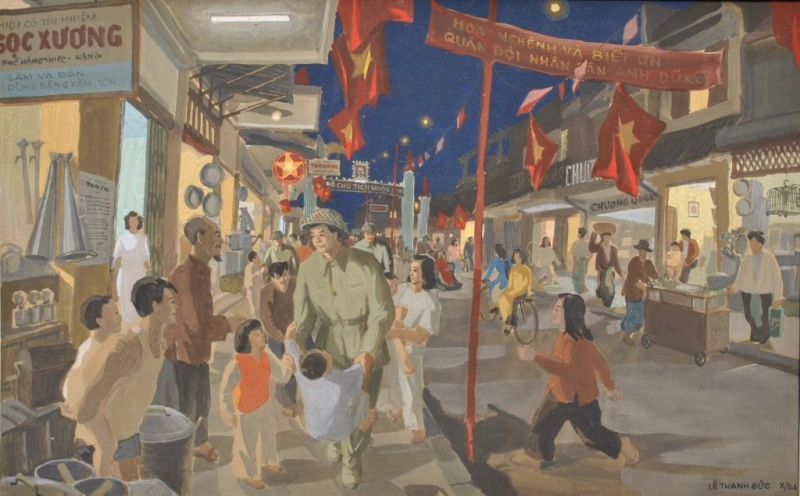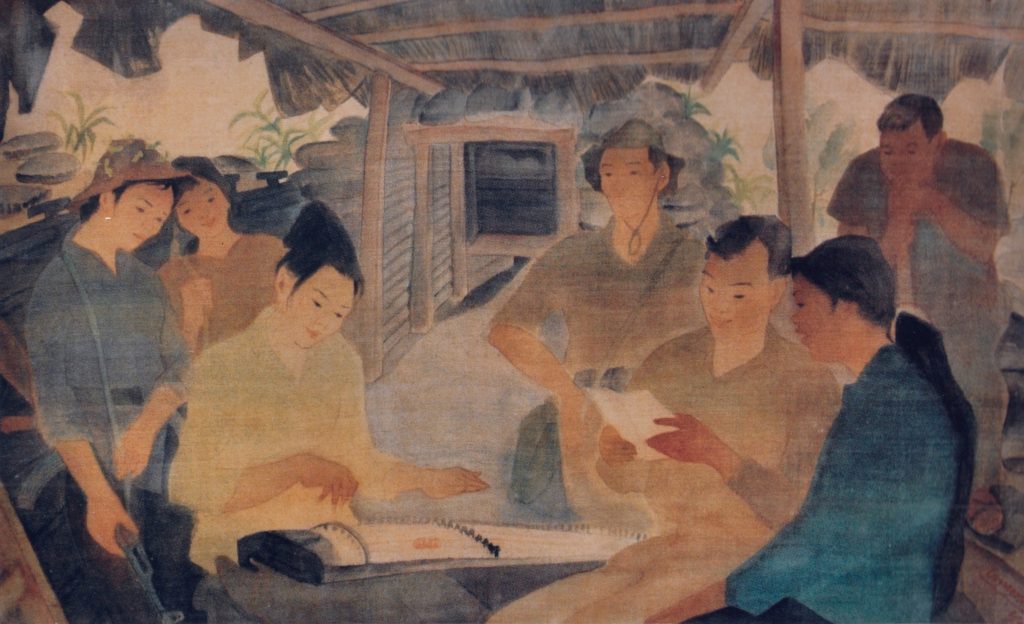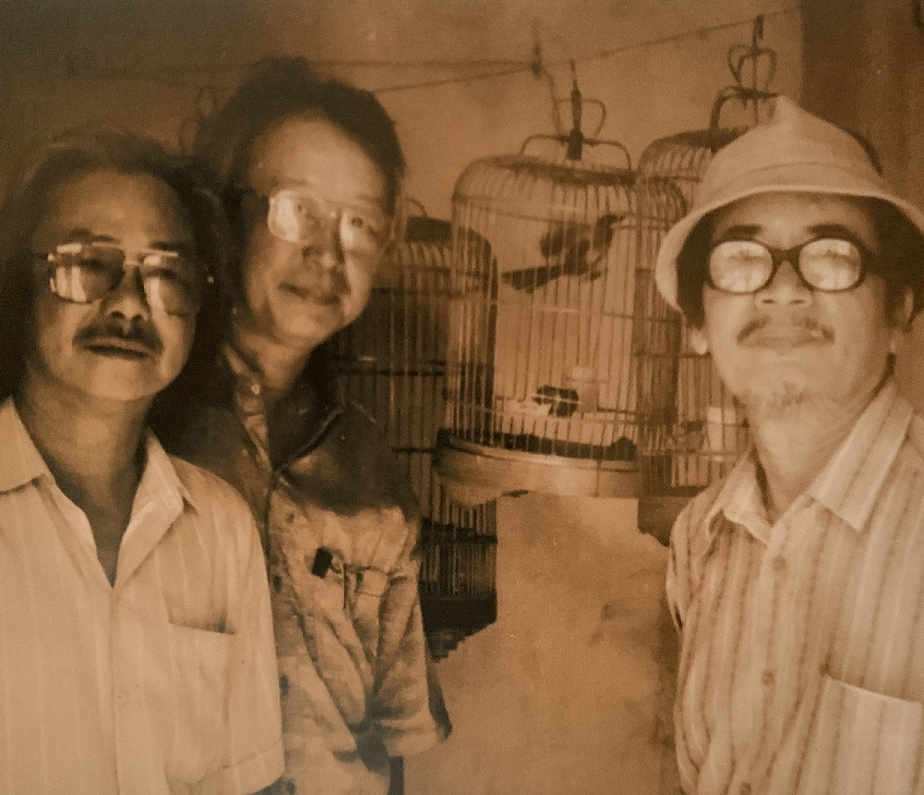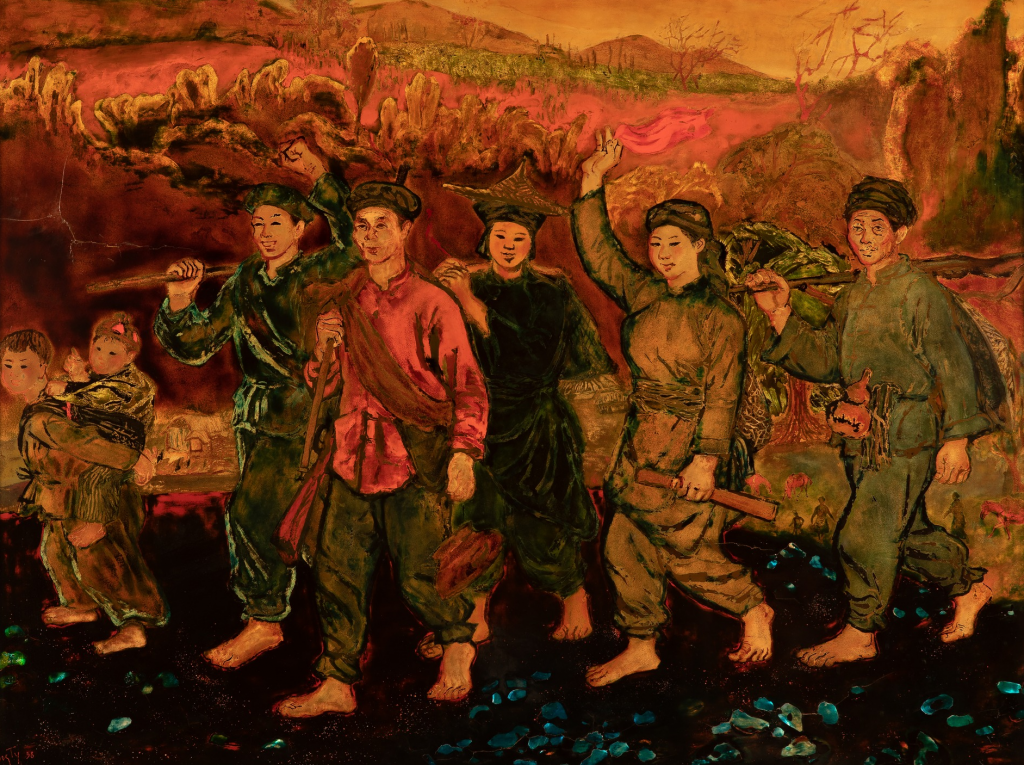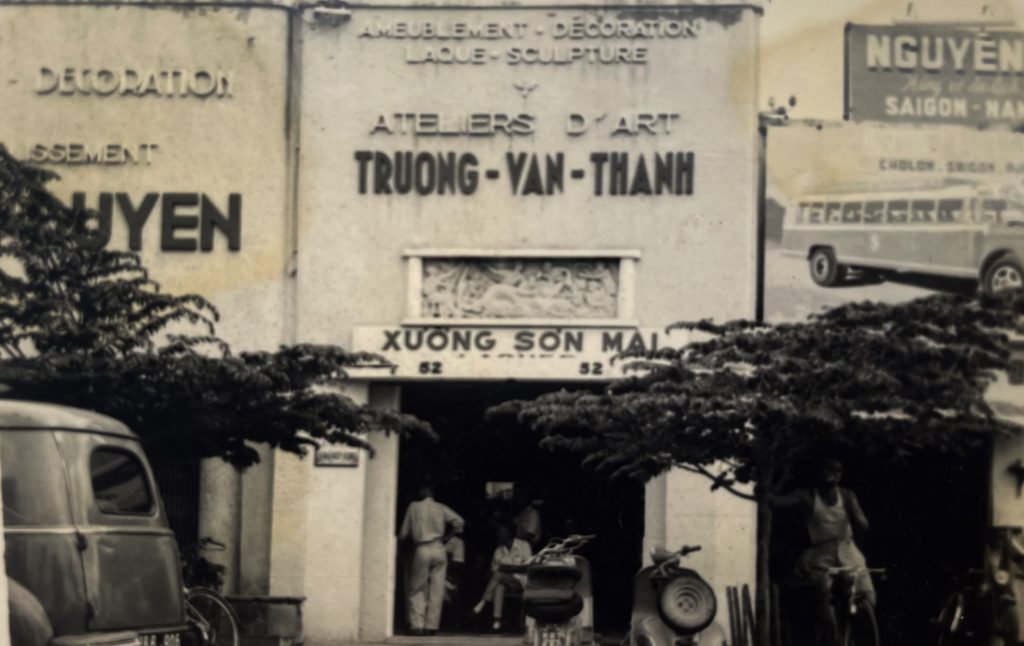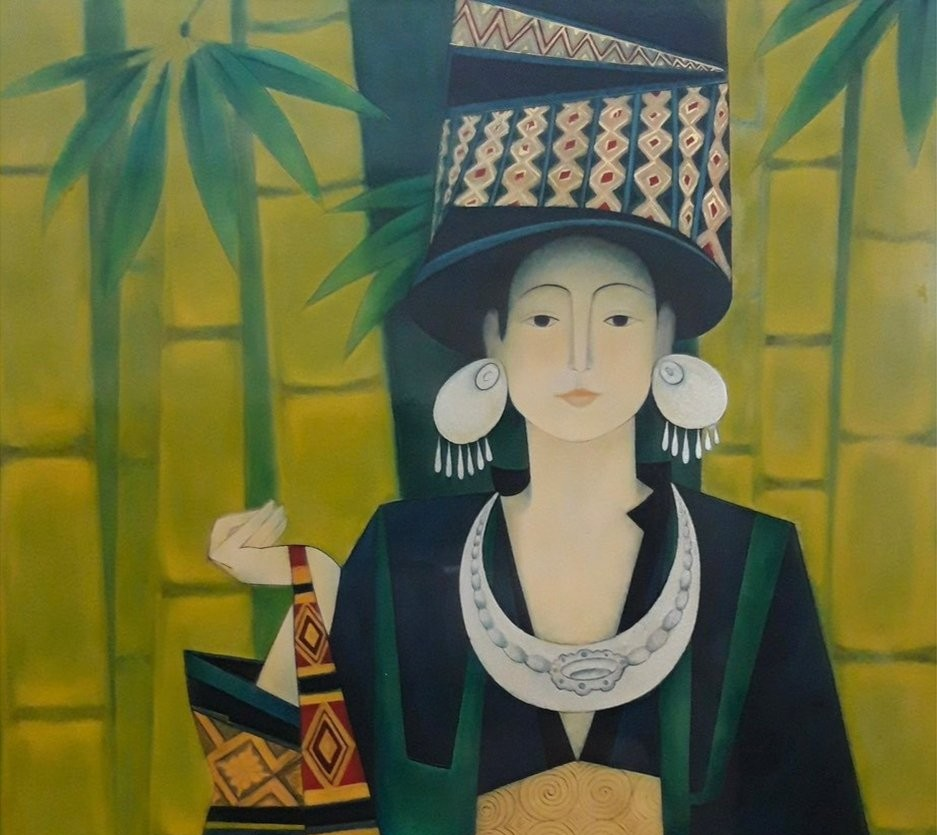When it comes to the fine crafts industry of the South before 1975, people often see next to the famous Thanh Le and Tran Ha lacquerware companies, which were located in Binh Duong, the name Me Linh fine crafts company in Saigon is always mentioned. Even though it had only existed for more than ten years, the revenue was not large, it did not have a large factory and many international medals like Thanh Le.
Why did this company create such a good reputation?
In 1958, among the graduates of the National School, Saigon College of Fine Arts, was painter Nguyen Van Minh, whose silk painting ‘Picking lotus’ was highly appreciated, helping him become the valedictorian of the class. After graduating, painter Nguyen Van Minh was introduced by Professor Le Van De to work at the Small Technology Promotion Center.
The following year (1959), painter Nguyen Van Trung graduated and also won valedictorian. Mr. Nguyen Duoc, director of Saigon Small Technological Promotion Center with the policy of treasuring the best students, invited him to work too. After only a few months, he was granted a scholarship from the Colombo Aid program going to Japan to study lacquer in Sendai province. After that, painter Nguyen Van Minh was also granted a scholarship by the US Economic Aid Mission to Vietnam to go to Japan, learning about small-technology and lacquer, and to delve into maki-e techniques in Japanese laquer paintings.
Two painters Nguyen Van Minh and Nguyen Van Trung had the same opportunity to major in lacquer, later built the Me Linh fine crafts company.

Họa sĩ Nguyễn Văn Trung và họa sĩ Nguyễn Văn Minh gặp lại nhau tại Hoa Kỳ thập niên 1990. Tư liệu của họa sĩ Nguyễn Văn Trung
To get there, they had to go a long way. First of all, after returning from Japan, the two men were entrusted by the Small Technological Promotion Center to manage the ‘Pilot lacquer’ establishment at house number 3, Pham Dang Hung Street (now Mai Thi Luu Street, Da Kao area, District I). This establishment was located on the entire 3rd floor with dozens of artists and employees. Downstairs was the Office of Fine Arts Education and Office of Technique. Mr. Director Nguyen Duoc worked on the 1st floor. Mr. Duoc made very good conditions for the development of the ‘Pilot lacquer’ and had supported since the beginning when there was nothing. In addition to the main workers, this establishment also hired a number of poor students who had no experience in lacquer to help with half a day, working while studying. Mr. Minh and Mr. Trung earned their salary as officer from the center, their products were displayed and sold at the center’s showroom on Tu Do Street (Dong Khoi).
With the function of vocational training, Mr. Nguyen Duoc’s center opened up many directions for the development of handicraft industry, of which ‘Pilot lacquer’ was an example. He focused on finding good artisans in handicrafts such as weaving and making shellfish mosaic to bring to the Vocational Training Center. He invited Japanese experts to teach pottery making and silk weaving. He also traveled to Quang Tri in the border area to invite a very good shellfish mosaic craftsman with a heirloom profession from many generations in Quang Tri and allowed his whole family to live in Saigon. A Japanese-American who was a very good art designer was hired to run the center’s operations.
Painter Nguyen Huu Sang in Binh Duong recalled: “At that time, besides the two administrators, Mr. Minh and Mr. Trung, I was in charge of the technical part. Artists included Nguyen Hong Lang, Do Ky Hoang and Do Manh Tuong. We made small lacquerware like vases, photo albums, small paintings.” After that, Mr. Sang went to Hue to later worked as deputy director of the branch of the lacquer shop in Hue, founded by Mr. Nguyen Duoc, and directed by painter Do Ky Hoang.
By 1965, this ‘Pilot lacquer’ was changed to ‘Me Linh Fine Crafts Company of Vietnam’ and painter Nguyen Van Minh was the director, organized under the self-sufficient regime. The main activity of the company was making paintings and objects with lacquer, turtle-shell, hand-painted scarfs, enameled jewelry and wallets, wooden furniture… The company had more than 60 people working in the workshop. At that time, there were some bourgeois who applied for shares. Finally, there were five shareholders: Mr. Nguyen Huu Pha, Mr. Cao Thai Son, brother of Cao Dong Hung theater owner, Mrs. Quang An was the owner of a lamp shop, later opened a lacquer shop on Nguyen Hue street, Nguyen Van Minh and Nguyen Van Trung. At that time, the South was at war, the export was almost limited, the small-tech industry could only export lacquerware, export was subsidized, each dollar was supplemented extra money by the government. Mr. Trung remembered several times that Doctor Bui Kien Tin took Mr. Minh and Mr. Trung to lunch at Cercle Sportif Saigonnais (now the Culture Labor Center) for lunch to ask for a business partnership. The rich like Doctor Tin at that time had a lot of money and capital, but needed an investment. Making lacquer paintings for export was the industry they wanted to invest the most capital in.

Painter Nguyen Van Trung and painter Nguyen Van Minh met again in the United States in the 1990s. Document of painter Nguyen Van Trung.
At first, each shareholder of this establishment spent one hundred thousand dong for common capital. A few years later, Mr. Minh and Mr. Trung, each mortgaged their own house, be given loans from the Industrial Promotion Center for a total of 5 million VND. Thanks to the capital, the company’s operations after 1968 were less difficult despite the recent war. Shares were divided into 6/4, Mr. Minh 6, Mr. Trung 4.
During its operation, the company designed a style of women’s fashion wallet, machine-embroidered on canvas. This style was very popular at that time. But because there are many firms imitating the model, Me Linh company was forced to find a newer, trendy technique that can be introduced at home and abroad. Having the strength of lacquer, painter Nguyen Van Minh had researched and created a kind of leather embossed with lacquer that could be produced quickly, with high aesthetics, and could compete with foreign goods. The main material was cowhide available in the country. First, made a variety of hand-painted designs. Then, the artists painted decorative patterns with images of themes taken from ink paintings such as flowers, birds, bamboo branches, girls, landscapes and abstract paintings. The decorative pattern was not drawn by strokes but painted in patches like woodblock prints so that it could be easily printed on the cowhide later. Then the sample was made into a film by silkscreen printing. Paint used for printing was manufactured exclusively so that when printed, the colors emerged like woodblock prints. The making of this paint was an important step in the production because the wallet needed to be shiny and eye-catching. After printing, used colors to highlight the details, completed the picture. Finally, covered with a layer of brown paint.
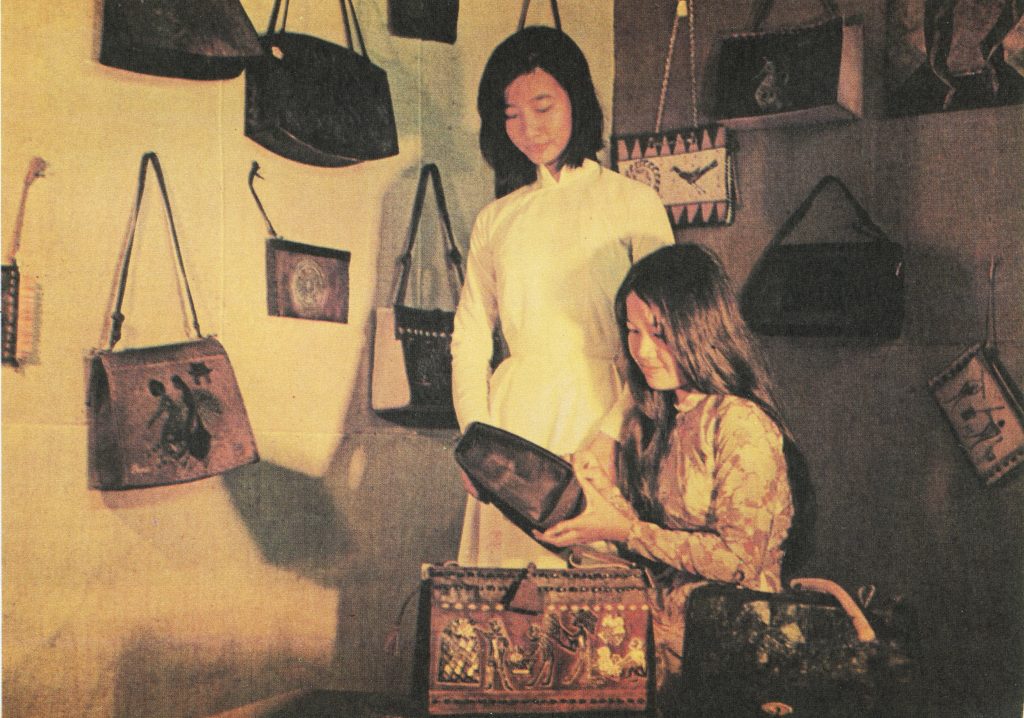
The painting by artist Nguyen Van Minh, included in the introduction brochure of Me Linh company, appeared at the Indochina thematic auction of Art Valorem auction house in Paris on October 23, 2017 (lot 277)
Me Linh’s lacquered wallets had attracted customers because of its durability, purely Vietnamese and especially its luxurious beauty. The design was simple, unfussy and convenient. Women at home and abroad had ordered a lot.
When Me Linh Company was assigned to produce the painting ‘Bình Ngô Đại Cáo’ in the State Letters room at the newly built Independence Palace in 1967, Mr. Trung remembered that the company was busy at that time making a parade stand to celebrate the inauguration of the Palace. The remaining time was too little, so everyone’s worried that they wouldn’t have enough time to make the painting. Mr. Minh and Mr. Trung sat down to discuss carefully, inviting Professor Nguyen Van Ro to be a consultant. The problem that needed to be solved was that the painting would be too big, the type of lacquer painting, if painted with thick strokes, the paint will melt. In the end, the solution was to put a layer of fabric over it, trace the shape down, then cut the fabric to leave the line. This was the same technique as lacquer engraving painting (coromandel), but it was not engraved but painted. The painting was completed on time and still exists today in the Independence Palace. Particularly, the model of tables and chairs with luxurious and unique patterns on the body of the chair in the State Letters room was designed by Mr. Trung. Thanks to both of them deeply studying Japanese painting techniques, many techniques of this school were applied, especially the image of ‘Bình Ngô Đại Cáo’ painted by Mr. Minh was also influenced by Japanese painting.
After that success, Me Linh company received many orders from abroad, especially from Japan with many establishments coming and the revenue from this source accounted for a large proportion. Although the company’s showroom was small, it always attracted many foreign customers to buy and order. There was a Jesuit priest who taught at the University of Literature, Father Larr, who liked Chinese culture and lacquer materials, so he introduced many large factory owners of foreign beer and ice firms to order paintings and buy products. It was a prosperous period for the company, good reputation went far, they had made a lot of products, and because of the nice products, someone like Father Larr volunteered to promote it. Later, when Mr. Minh moved from the US to an art exhibition in France, he met Father Larr again and was helped by him to invite the French mayor Jacques Chirac to attend the opening ceremony.
There was a funny story, once the company was ordered by the priest mentioned above to make a lacquer painting of the Pope in the Vatican. This was an opportunity to introduce paintings of Vietnam’s unique lacquer material to the world. When done, the Holy See sent Mr. Minh and Mr. Trung, each a certificate of thanks and a badge of the Pope. In 1965, a painter friend who was staying on the church’s land in Tam Hiep, Bien Hoa was asked to move. This man returned to Saigon to borrow this badge, showed it to the father there and was allowed to stay.
During the period from 1965 to 1970, Mr. Nguyen Van Trung was mobilized to join up, the army was stationed in Thu Duc. However, because he worked as a trainer at the camp, every day, after having dinner, he returned to the company to work until 10 pm and then went home. The next morning, he went to Thu Duc again early. When the day was too busy, he asked the driver to bring the product to the workplace to paint.
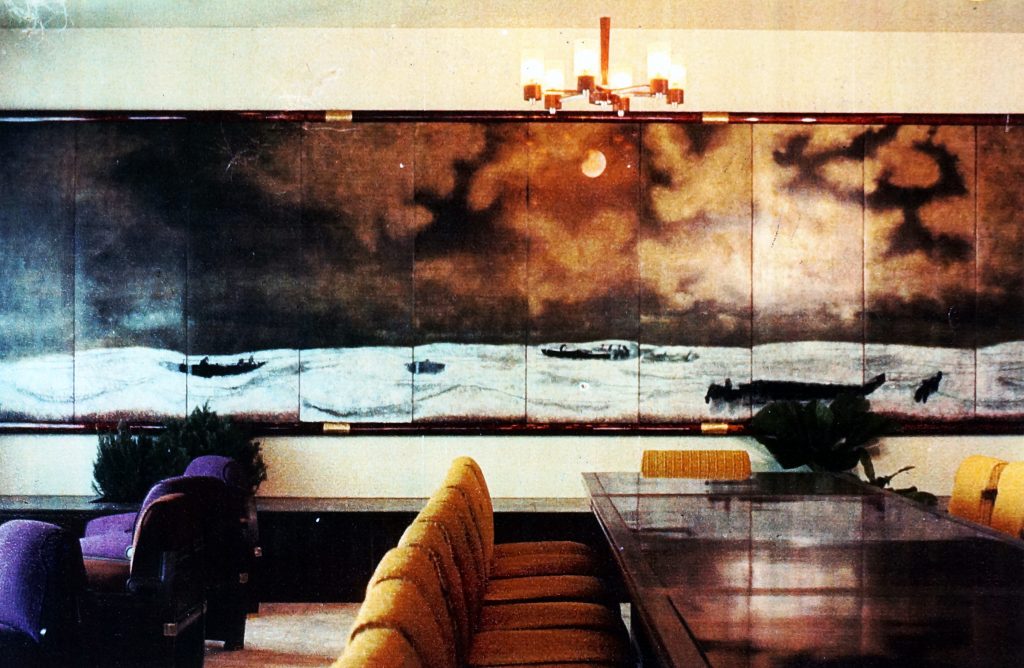
Painting and interior decoration of Vietnam Thuong Tin Bank designed by Me Linh company in the early 1970s. Document: Painter Phi Mai
After 1968, Me Linh company bought a large factory on Truong Quoc Dung street in Phu Nhuan. The company expanded its work, undertaking interior decoration for Vietnam Thuong Tin Bank in Saigon, Ham Nghi street and the branch in Can Tho.
Since 1970, Mr. Trung was seconded by the Army of the Republic of Vietnam to teach at the Intermediate Polytechnic Schools and the Technical Pedagogical College. At the same time, he worked for Me Linh company. Since 1970, despite working together in name, the two men had different directions, so Mr. Trung rented a house next door, opened the door to the company, and processed products for commission from the company. Thanks to that, in 1975, Me Linh company was nationalized, but Mr. Trung’s family was allowed to bring their belongings back.
Compared with the prestigious and long-standing Thanh Le company, got many talented artists such as Duy Liem, Thai Van Ngon, Ngo Tu Sam … with the direction of making lacquer paintings, ceramics in the traditional style, the company Me Linh was born late, but its fame spreaded quickly. Mr. Trung said that, although it was born later, Me Linh’s success was thanks to its basic and modern improvements to meet the wide needs of customers.
A relative of Mr. Nguyen Van Minh told the writer: After 1975, directors of two fine crafts companies Thanh Le and Me Linh met in France. Mr. Thanh Le suggested Mr. Nguyen Van Minh to cooperate to establish a fine crafts company, which Mr. Thanh Le believed with the capacity and experience of both, this company would be successful. Mr. Nguyen Van Minh replied that he was willing to participate, and asked again: ‘Whose name will the company be?’ The answer is not mentioned. The project of combining the two largest fine crafts giants in the South before 1975 did not come true, and would be an interesting hypothesis for art lovers if it happened.
Painter Nguyen Van Trung remembered that in the past, the paintings of artist Nguyen Gia Tri that he had seen always had the back side of the painting made very carefully. After 1975, he had the opportunity to look back at some products of Me Linh company, which were processed by his own establishment from 1970 to 1975 and sold in Hong Kong. The boards of those paintings were still very sturdy, so the paintings were kept intact, without peeling, warping or shrinking. That was the result of what he had learned over the course of more than half a year in Sendai province, which always set very high requirements when preparing the wooden board of paintings. He focused on applying that and it also contributed to the reputation of Me Linh company.
*Some photos of products of Me Linh company. Document of painter Nguyen Van Trung and Thế Giới Tự Do Newspaper, volume XVI, number 4:

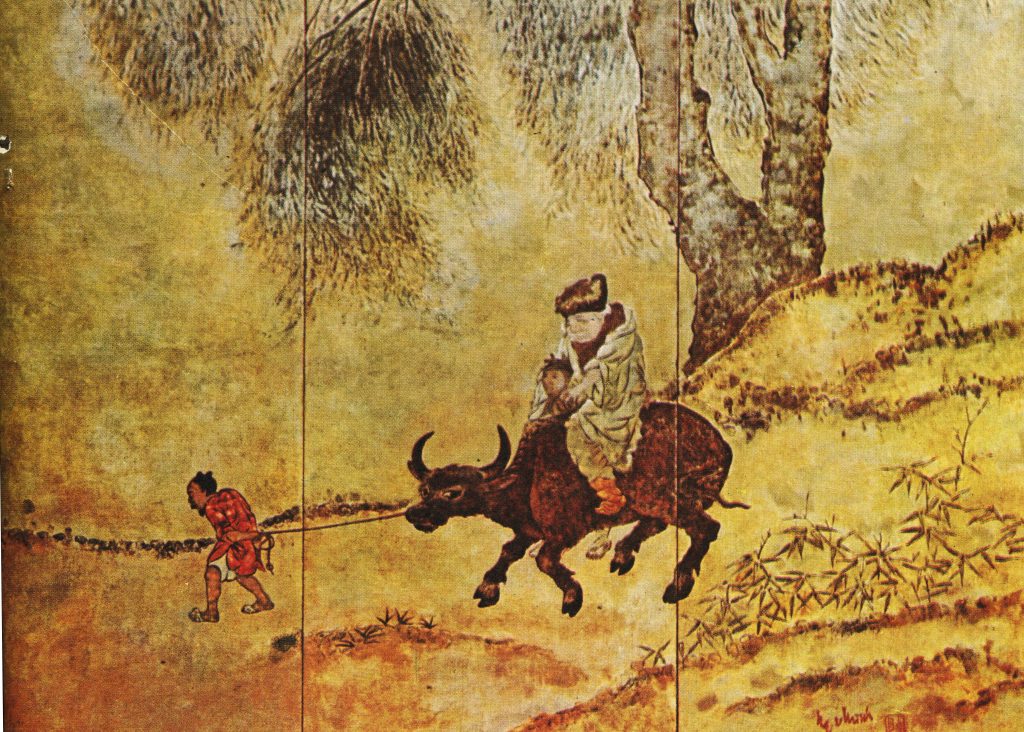
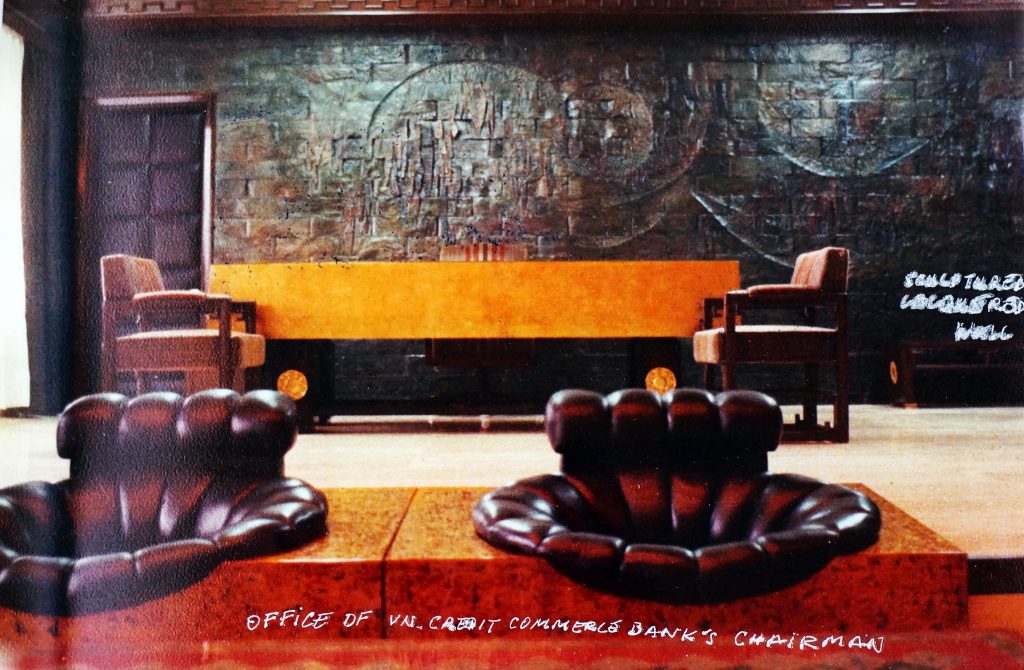
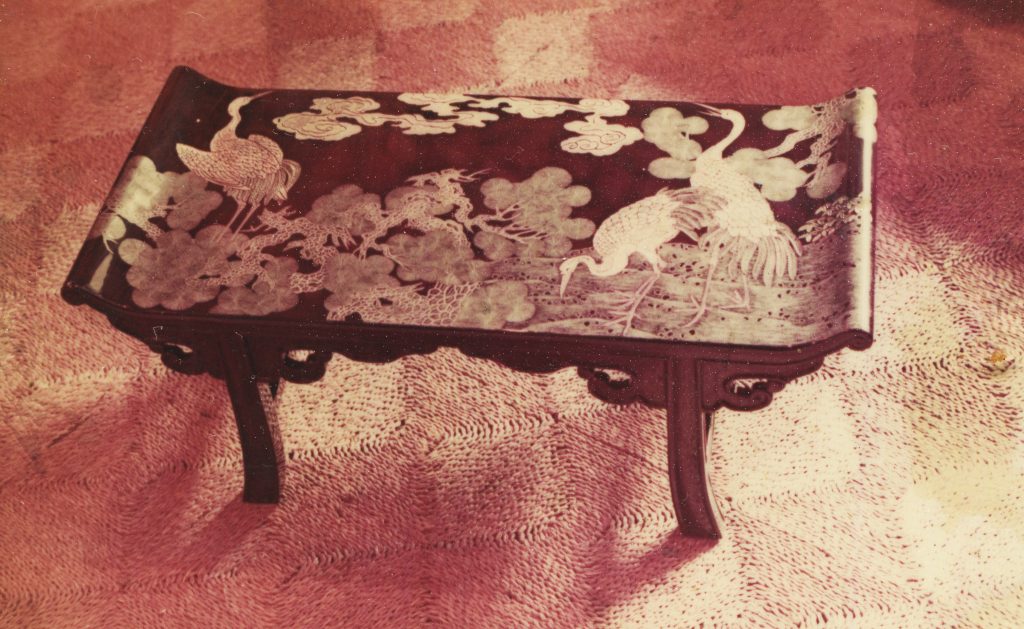
Article by Researcher Pham Cong Luan
(Excerpt from the book ‘Saigon, life story of the street’ volume 5, Phuong Nam Book Company published in 2018)
Courtesy of the author to be published on Viet Art View’s media platforms


